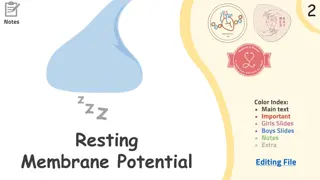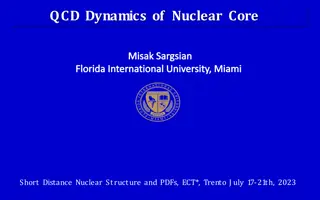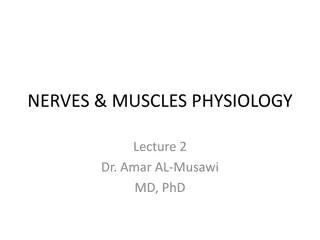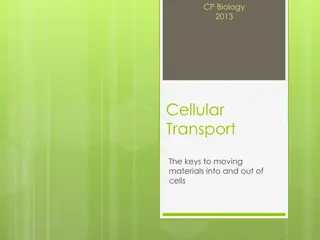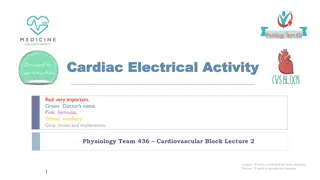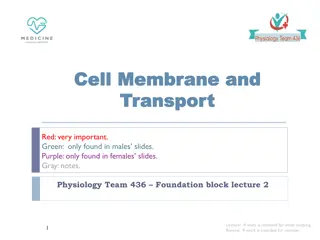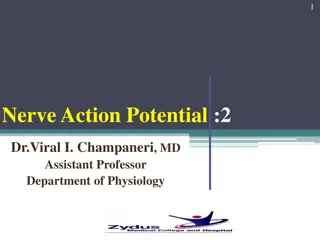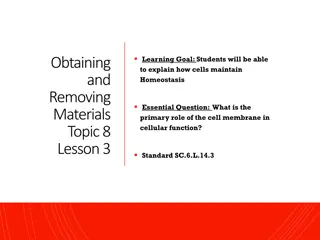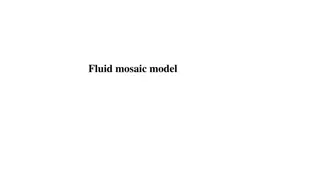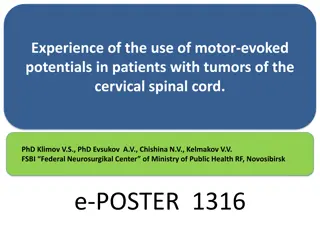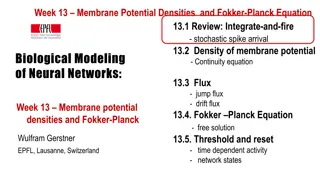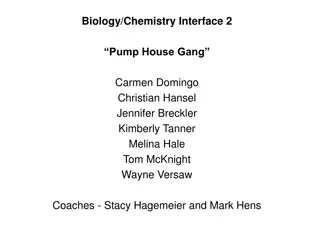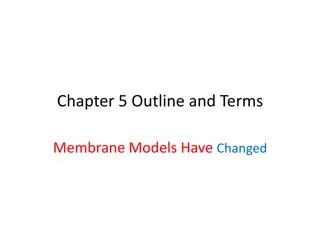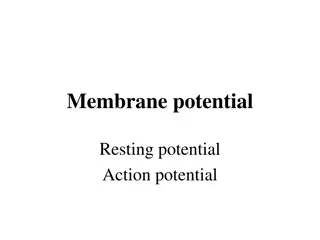Understanding Membrane Excitability in Action Potentials
Explore the mechanisms of action potentials in nerve fibers, including the all-or-nothing principle, ion channels involved, ion movement, and effects of drugs on action potentials. Learn about accommodation, refractory periods, and consequences of blocking ion pumps on nerve conduction.
- Membrane Excitability
- Action Potentials
- Ion Channels
- Nerve Conduction
- Drugs blocking Action Potentials
Download Presentation

Please find below an Image/Link to download the presentation.
The content on the website is provided AS IS for your information and personal use only. It may not be sold, licensed, or shared on other websites without obtaining consent from the author. Download presentation by click this link. If you encounter any issues during the download, it is possible that the publisher has removed the file from their server.
E N D
Presentation Transcript
Ministry of higher Education and Scientific Research University of Basrah Al-Zahraa College of Medicine MEMBRANES AND RECEPTORS MODULE SESSION : 4 DATE: 29th Dec. 2020 ELECTRICAL EXCITABILITY Module staff: Dr. Raghda S. Al-Najjar Dr. Nehaya M. Al-Aubody (module leader) Dr. Hamid J. Abbas Dr. Raghad Mohammed Dr. Hssain Abdulamer Dr. Ammar M.S. Almomin Dr. Ahmed J.A. Al-ali Dr. Maida A. Adnan Dr. Hadeel S. Al Ali Dr.Amani N. Mohammed Dr.Dhaighum I. Al-Mahfoodh Dr. Ansam Munadhel Dr. Zainab A. Almanaser 2016_Guyton_and_Hall_Textbook of Medical Physiology Pictures are downloaded from a common distributive source.
1. The basis of the action potential a. Sketch the relationship between membrane potential and time during an action potential, labeling the scales appropriately. b. The action potential is often described as all-or- nothing. What does this mean? Can you think of any consequences for the coding of information as it is transmitted by nerve fibers? c. Which ion channels are involved in generating an action potential?
d. Briefly describe the molecular nature of the channels you list. e. What do you understand by the terms activation and inactivation, applied to a voltage-activated ion channel? f. Indicate on your diagram on page 44 the way in which the open probability of the channels involved changes during the action potential. g. Describe how ions move as a consequence of channel opening during the action potential.
2. How much ion moves to generate an action potential? a. For a nerve fibre 1 m in diameter, a calculation of the Na+ entry needed to generate one action potential (based on a membrane capacitance of 1 F/cm2 and a voltage change of 100 mV) shows that this Na+ entry will increase the intracellular [Na+] by about 40 M (4 x 10-5 M). The resting intracellular [Na+] is about 10-12 mM. b. If the Na+/K+ pump were to be blocked (for example by using ouabain), what would be the consequences for nerve conduction of: 1. A single action potential in this nerve fibre? 2. A train of 1,000 action potentials?
3. Accommodation and refractoriness a. Explain the term accommodation as applied to nerve. b. What do you understand by the terms absolute refractory period and relative refractory period of a nerve fibre. c. Explain how the properties of ion channels lead to the absolute and relative refractory periods you defined above.
4. Drugs affecting action potentials a. How might a drug act to block the production of action potentials? b. Indicate how local anasthetics act to block action potentials of peripheral nerves. Name one such drug.
c. Tetrodotoxin (from the Japanese puffer fish) blocks voltage-gated Na+ channels and occasionally causes poisoning in Japan. 4-aminopyridine blocks voltage-gated K+ channels. Both compounds are often used in experimental studies of nerve. What effect would you expect each to have on the action potential?


